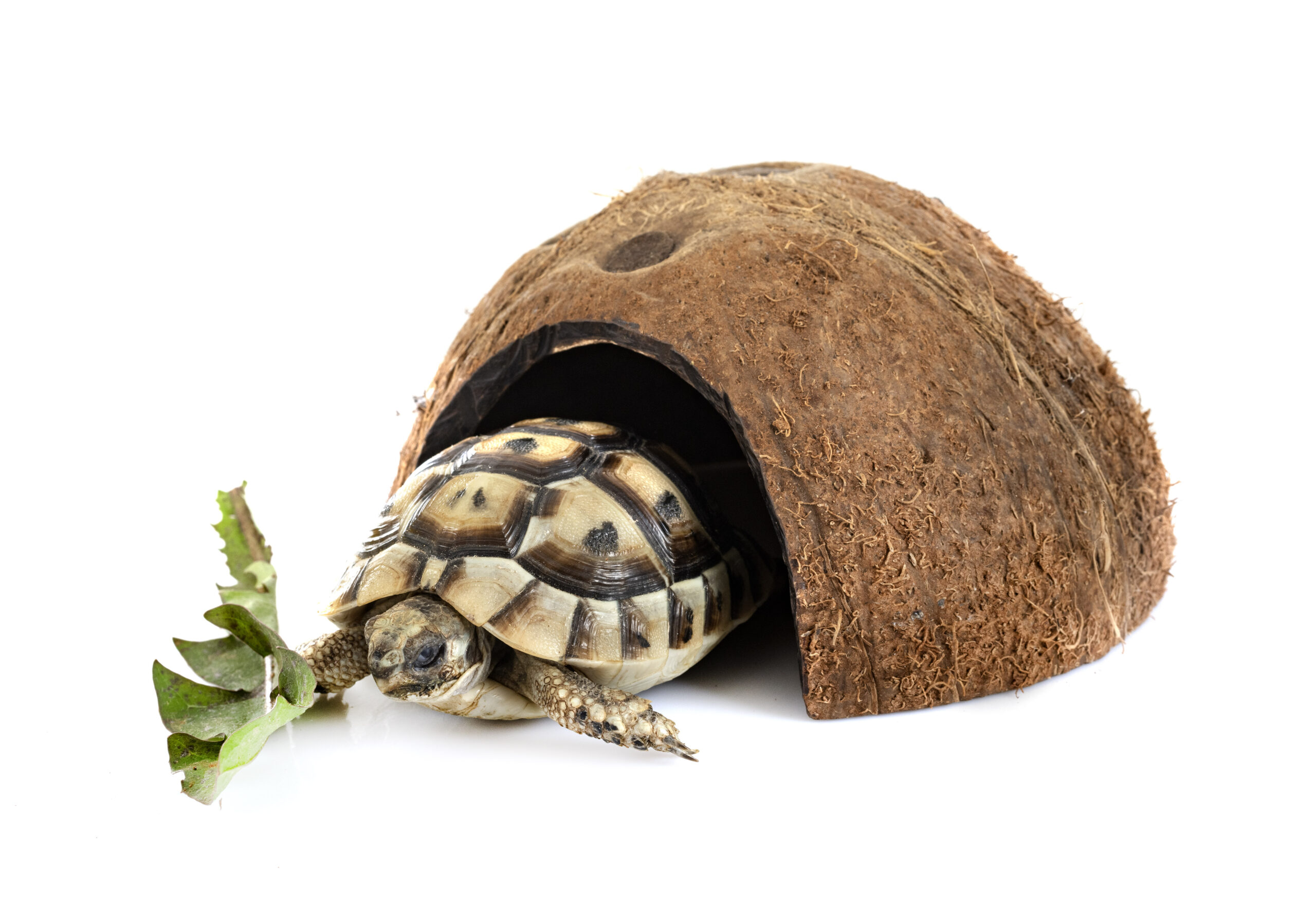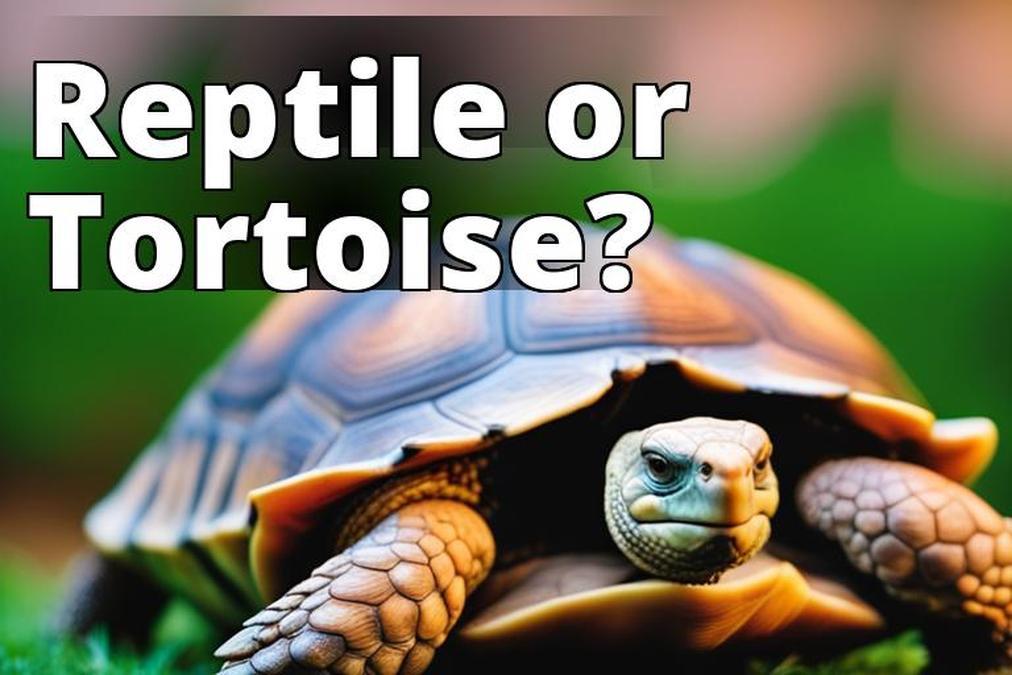Sea turtles are an essential part of our marine ecosystems, playing a vital role in maintaining the delicate balance of underwater life. These magnificent creatures are facing numerous threats, such as habitat destruction, pollution, and climate change. It is crucial to prioritize turtle conservation efforts to ensure the survival of sea turtle species and preserve the biodiversity of our oceans.
Key Takeaways:
- Endangered sea turtles play a significant role in marine conservation and the preservation of biodiversity.
- Turtle conservation efforts are essential for the protection of sea turtle habitats and nesting sites.
- Preserving sea turtle populations contributes to the overall health and balance of marine ecosystems.
- Supporting sea turtle research and conservation organizations is crucial for their long-term survival.
- By taking individual and collective action, we can help protect these magnificent creatures and the wonders of our oceans.
The Importance of Sea Turtles in the Ecosystem
Sea turtles are crucial for maintaining balance in the marine ecosystem. They play a vital role in regulating prey populations, facilitating the growth of coral reefs, promoting the health of seagrass beds, and providing habitat for various marine species. Unfortunately, the sea turtle population is experiencing a decline, posing a significant threat to marine biodiversity. Conservation efforts and habitat protection are essential to ensure the survival of these endangered species.
Sea turtles are known to migrate long distances between their nesting sites and foraging grounds, contributing to the dispersal of nutrients and helping to maintain the health of different marine habitats. Their migration patterns also highlight the interconnectedness of marine ecosystems and the importance of safeguarding these critical areas. By protecting nesting sites and implementing conservation measures, we can create safe spaces for sea turtles to thrive and contribute to the overall health of the marine environment.
Conservation organizations and wildlife conservation efforts play a crucial role in raising awareness about the importance of sea turtles in the ecosystem. These organizations work tirelessly to protect sea turtle habitats, monitor the populations, and conduct research to better understand their behaviors and needs. By supporting these initiatives, we can contribute to the preservation of marine biodiversity and ensure the long-term survival of these majestic creatures.
“Sea turtles are an integral part of the marine ecosystem and their decline puts the entire ecosystem at risk. Their preservation is not only important for the sake of wildlife conservation but also for the health and sustainability of our oceans.”
| Threatened Species | Habitat Protection | Conservation Organizations |
|---|---|---|
| Sea turtles are classified as threatened species, facing numerous challenges due to habitat loss, pollution, climate change, and poaching. | Habitat protection is crucial for safeguarding sea turtles and their nesting sites. Efforts to reduce coastal development, regulate fishing practices, and establish marine protected areas are crucial. | Conservation organizations play a vital role in supporting sea turtle conservation efforts. They conduct research, raise awareness, and collaborate with local communities and governments to implement conservation measures. |
The Role of Sea Turtles in Coral Reefs
Sea turtles, particularly hawksbill sea turtles, play a crucial role in the health and maintenance of coral reef ecosystems. These fascinating creatures are known for their unique feeding habits, which contribute to the control of sea sponge populations in coral reefs, ultimately promoting increased biodiversity. The interaction between hawksbill sea turtles and coral reefs highlights the intricate balance and interconnectedness of marine species and habitats.
Hawksbill sea turtles are well-suited for their role in coral reefs due to their specialized diet. These turtles primarily feed on sea sponges, which are abundant in coral reef environments. By consuming certain species of sea sponges, hawksbill sea turtles allow less common and faster-growing sponges to thrive, enhancing the overall biodiversity of the reef. This symbiotic relationship showcases the importance of sea turtles in maintaining the delicate ecological balance of coral reef ecosystems.
Conservation efforts aimed at protecting hawksbill sea turtles and their coral reef habitats are crucial for the preservation of marine biodiversity. Coral reef conservation initiatives play an essential role in supporting the recovery of hawksbill sea turtle populations and ensuring the long-term vitality of these fragile ecosystems. By safeguarding the habitats and food sources of hawksbill sea turtles, we can contribute to the conservation of threatened species and the overall health of coral reefs.

Hawksbill Sea Turtles: Guardians of Coral Reefs
“The intricate relationship between hawksbill sea turtles and coral reefs highlights the delicate balance of nature and the importance of preserving these interconnected ecosystems.” – Marine biologist, Dr. Emma Johnson
In conclusion, hawksbill sea turtles play a vital role in coral reef ecosystems by controlling sea sponge populations and promoting increased biodiversity. Conservation efforts focused on protecting these threatened species and their habitats are essential for maintaining the health and vitality of coral reef environments. By recognizing the significance of hawksbill sea turtles and supporting coral reef conservation, we can ensure the preservation of these remarkable creatures and the ecosystems they call home.
| Hawksbill Sea Turtles in Coral Reefs | Importance |
|---|---|
| Control of sea sponge populations | Promotes increased biodiversity |
| Specialized diet of sea sponges | Allows faster-growing sponges to thrive |
| Symbiotic relationship with coral reefs | Maintains delicate ecological balance |
| Conservation efforts | Crucial for preservation of hawksbill sea turtles and coral reefs |
Sea Turtles and Beach Nourishment
Sea turtles play a crucial role in beach nourishment, contributing to the health and stability of coastal ecosystems. Their nesting activities provide essential nutrients that promote the growth of dune vegetation, which helps prevent coastal erosion and maintain the integrity of the shoreline. By protecting sea turtle nesting sites, we can safeguard these vital coastal habitats and ensure the long-term sustainability of our beaches.
The nesting season is a critical time for sea turtles, as they return to their birthplace to lay their eggs. During this period, it is crucial to minimize disturbances and provide a safe environment for the nesting turtles. Coastal communities and conservation organizations often implement measures such as beach closures, nest monitoring, and public education to protect turtle nesting sites. By respecting these guidelines and promoting responsible beach practices, we can support the conservation efforts and help maintain the delicate balance of coastal ecosystems.
Table:
| Turtle Species | Nesting Habits | Nesting Season |
|---|---|---|
| Loggerhead Turtle | Nests in sandy beaches above the high tide line | May to October |
| Green Turtle | Nests on sandy beaches near seagrass beds | June to September |
| Leatherback Turtle | Nests on sandy or rocky beaches | April to August |
By recognizing the importance of sea turtle nesting sites and their role in maintaining coastal ecosystems, we can take steps to protect these vulnerable habitats. Through effective conservation strategies and public awareness, we can ensure the continued beach nourishment and preservation of our precious coastal environments for future generations.
Sea Turtles as Prey and Predators
Sea turtles play a crucial role in maintaining the ecological balance of both land and ocean ecosystems. As prey, hatchlings face numerous challenges as they make their way from the nest to the ocean. They are targeted by a variety of predators, including birds, crabs, and fish. These predators are essential for controlling sea turtle populations and ensuring the survival of stronger individuals.
On the other hand, adult sea turtles occupy a unique position as both predators and prey. While they are apex predators in the ocean, feeding on jellyfish, sponges, and other invertebrates, they also become prey for larger marine creatures. Sharks and orcas, for example, target adult sea turtles, highlighting the intricate web of predator-prey relationships within the marine food chain.
By regulating prey populations and providing shelter for smaller species, sea turtles contribute to the overall ecological balance. They play a vital role in maintaining the health and diversity of marine ecosystems, ensuring the sustainability and interconnectedness of species within the food web.
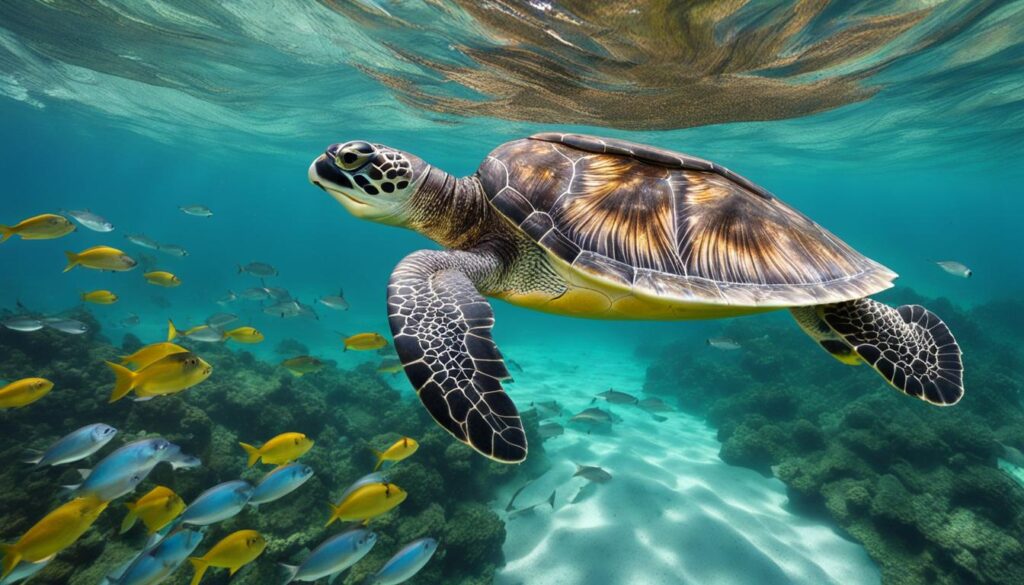
The Interconnected Web of Life
Sea turtles are just one piece of the intricate puzzle that is our planet’s biodiversity. Their role as both prey and predator highlights the delicate balance that exists within ecosystems. As we work towards protecting and conserving endangered sea turtles, we are not only safeguarding a species but also preserving the intricate web of life that depends on their presence.
| Predators | Prey |
|---|---|
| Sharks | Sea turtles (adults) |
| Orcas | Sea turtles (adults) |
| Birds | Sea turtle hatchlings |
| Crabs | Sea turtle hatchlings |
| Fish | Sea turtle hatchlings |
The Delicate Balance
Sea turtles, as both prey and predators, contribute to the overall health and stability of marine ecosystems. By controlling prey populations and providing a food source for larger predators, sea turtles help maintain the delicate balance within the food web. Their presence ensures the sustained health and diversity of marine life, contributing to the overall ecological balance of our planet.
Preserving the Circle of Life
Protecting sea turtles is not just about preserving a species; it is about safeguarding the interconnected web of life that they are a part of. By understanding and appreciating the vital role sea turtles play as both prey and predators, we can work towards their conservation and contribute to the preservation of the delicate ecological balance that sustains us all.
Sea Turtles and Seagrass Beds
Seagrass beds are incredibly important ecosystems in the marine environment, and green sea turtles play a crucial role in their preservation. These magnificent creatures graze on seagrass, helping to maintain the health and balance of these underwater meadows. By doing so, they promote seagrass growth, prevent overgrowth, and support the overall well-being of the marine ecosystem.
Seagrass beds serve as vital habitat, food sources, and nursery areas for a wide range of marine species. They provide shelter for small fish, crustaceans, and other invertebrates, while also serving as a feeding ground for larger predators. The presence of green sea turtles in these seagrass beds helps to regulate the ecosystem and maintain a diverse and thriving marine community.

The Role of Green Sea Turtles
“Green sea turtles are true stewards of the seagrass beds, acting as the guardians of these valuable marine ecosystems. Their grazing activities prevent seagrass overgrowth, ensuring that sunlight and nutrients can reach the seafloor, benefiting other marine plants and animals.”
Additionally, green sea turtles contribute to seagrass conservation by dispersing seeds as they feed on the seagrass. This process helps to promote seagrass reproduction and dispersal, contributing to the expansion and resilience of seagrass beds.
However, green sea turtles face numerous threats, including habitat loss, pollution, and climate change. Protecting their nesting sites, preserving their feeding grounds, and reducing human impacts such as plastic pollution are essential for the long-term survival of these incredible creatures and the preservation of seagrass beds.
| Threats to Green Sea Turtles | Actions for Conservation |
|---|---|
| Habitat loss due to coastal development | Preserving and restoring coastal habitats |
| Plastic pollution and ingestion | Reducing plastic waste and promoting responsible waste management |
| Climate change and rising sea levels | Supporting efforts to mitigate climate change and reduce carbon emissions |
By focusing on seagrass conservation and protecting green sea turtles, we can ensure the continued existence of these vital marine ecosystems and the incredible biodiversity they support. Together, let us work towards a future where green sea turtles and seagrass beds thrive, nurturing the beauty and balance of our oceans.
Sea Turtles and Cultural Significance
Sea turtles hold great cultural significance for many coastal communities and indigenous cultures around the world. These majestic creatures are revered as ancestral beings, symbolizing wisdom, longevity, and resilience. The connection between sea turtles and cultural heritage runs deep, with stories and traditions passed down through generations.
“In our culture, sea turtles are believed to be the protectors and guides of our people. They are a sacred symbol of strength and harmony with nature.”
The cultural significance of sea turtles also extends to the economic aspect. Many coastal communities rely on eco-tourism centered around sea turtle conservation. Visitors from around the globe are drawn to witness the majesty of sea turtles in their natural habitats, contributing to local economies and providing sustainable livelihoods for the communities.
Sea turtle conservation organizations play a crucial role in preserving these endangered species and their cultural significance. Through research, education, and community engagement, these organizations work tirelessly to raise awareness about the importance of sea turtles and their habitats. They collaborate with local communities, governments, and other stakeholders to develop and implement conservation strategies that ensure the long-term survival of sea turtles and the preservation of cultural heritage.
| Sea Turtle Conservation Organizations | Country/Region |
|---|---|
| The Sea Turtle Conservancy | International |
| WWF Sea Turtle Conservation Program | International |
| Marine Conservation Society | United Kingdom |
| Sea Turtle Inc. | United States |

Preserving the cultural significance of sea turtles goes hand in hand with their conservation. By supporting sea turtle conservation organizations and participating in eco-tourism initiatives, we can contribute to the protection of these magnificent creatures and the cultural heritage they embody. Through our collective efforts, we can ensure that future generations will continue to be inspired by the timeless beauty and importance of sea turtles.
Human Impact on Sea Turtles
Sea turtles are facing numerous challenges as a result of human activities, which have a significant impact on their survival and well-being. Some of the key threats include plastic pollution, light pollution, climate change, and habitat destruction. These factors not only directly harm sea turtles but also disrupt their ecosystems and contribute to the decline of their populations.
The Effects of Plastic Pollution
Plastic pollution is a major threat to sea turtles. The increased use of plastic in our daily lives has led to a significant amount of plastic waste finding its way into the oceans. Sea turtles often mistake plastic bags, straws, and other debris for food, leading to ingestion and potential health issues. The ingestion of plastic can cause internal injuries, blockages in the digestive system, and even death for these gentle creatures.
The Impact of Light Pollution
Light pollution, particularly along coastal areas, can have detrimental effects on sea turtles, especially during their nesting season. Artificial lights from buildings, streetlights, and coastal developments can disorient hatchlings, leading them away from the ocean and towards dangerous areas. This can decrease their chances of survival and impact the overall population growth of sea turtles.
The Role of Climate Change
Climate change poses a significant threat to sea turtles and their habitats. Rising temperatures can affect the sex ratios of hatchlings, as the temperature during incubation determines the gender of the offspring. Warmer temperatures can also lead to the loss of nesting sites due to rising sea levels, increased storm intensity, and beach erosion. These changes disrupt the natural reproductive cycle of sea turtles and further contribute to their decline.
Habitat Destruction and Conservation Efforts
Habitat destruction, including the loss of nesting beaches and feeding grounds, is another major concern for sea turtles. Coastal development, pollution, and overfishing all contribute to the degradation and destruction of their habitats. Efforts are being made by sea turtle conservation organizations to protect and restore these crucial habitats, but more needs to be done to ensure the long-term survival of these magnificent creatures.
| Threat | Impact on Sea Turtles |
|---|---|
| Plastic Pollution | Intestinal injuries, ingestion, death |
| Light Pollution | Disorientation, decreased survival |
| Climate Change | Altered sex ratios, nesting site loss |
| Habitat Destruction | Loss of nesting sites and feeding grounds |

The Ecological Effects of Sea Turtle Extinction
Sea turtles play a vital role in maintaining the balance of marine ecosystems. If sea turtles were to become extinct, there would be severe ecological consequences. One of the immediate impacts would be the decline of sea grass beds, which rely on sea turtles for their health and vitality. Sea grass beds serve as critical habitats for numerous marine species and provide food sources and nursery areas. Without sea turtles to graze on the sea grass, overgrowth could occur, leading to a loss of habitat and food for many marine organisms.
Additionally, the extinction of sea turtles would disrupt the intricate beach ecosystems. As sea turtles nest on beaches, their eggs and hatchlings contribute nutrients to the coastal vegetation, promoting the growth of dune grasses that help stabilize the beach and prevent coastal erosion. With the absence of sea turtles, beach ecosystems would suffer, and the stability of coastal areas would be compromised.
Furthermore, the decline of sea turtle populations would have ripple effects on the entire marine food chain. Sea turtles serve as both prey and predators, regulating the population of certain prey species and providing shelter for smaller marine organisms. Their absence would lead to imbalances in the food chain, potentially causing population declines in other species and disrupting the overall ecological equilibrium of the marine environment.
| Ecological Effects of Sea Turtle Extinction | Description |
|---|---|
| Decline of Sea Grass Beds | Sea turtles are key grazers that help maintain the health of sea grass beds. The loss of sea turtles would result in overgrowth and a decrease in biodiversity within these important habitats. |
| Disruption of Beach Ecosystems | Sea turtles contribute to the stability of beach ecosystems through their nesting activities. Without sea turtles, beach erosion could increase, leading to habitat loss for coastal organisms. |
| Imbalance in the Marine Food Chain | The absence of sea turtles would disrupt the regulation of prey populations and predator-prey relationships, potentially causing declines in other species and disrupting the overall ecological balance. |
The Importance of Sea Turtle Conservation
Conservation efforts are crucial for the protection and preservation of endangered sea turtles. With their population in decline and facing various threats, it is essential to take action to ensure their survival and the maintenance of a healthy marine ecosystem.
Endangered species protection is at the heart of sea turtle conservation programs. These programs focus on preserving sea turtle habitats, implementing measures to reduce human impact, and promoting awareness about the importance of marine wildlife preservation. By actively participating in these efforts, we can contribute to the long-term survival of these magnificent creatures.
Sea turtle preservation is not only important for the species itself but also for the overall marine ecosystem. Sea turtles play a crucial role in maintaining the balance of the ecosystem by regulating prey populations, facilitating the growth of coral reefs, and promoting the health of seagrass beds. The loss of sea turtles would have severe ecological consequences, leading to the decline of species and causing an imbalance in the marine food chain.
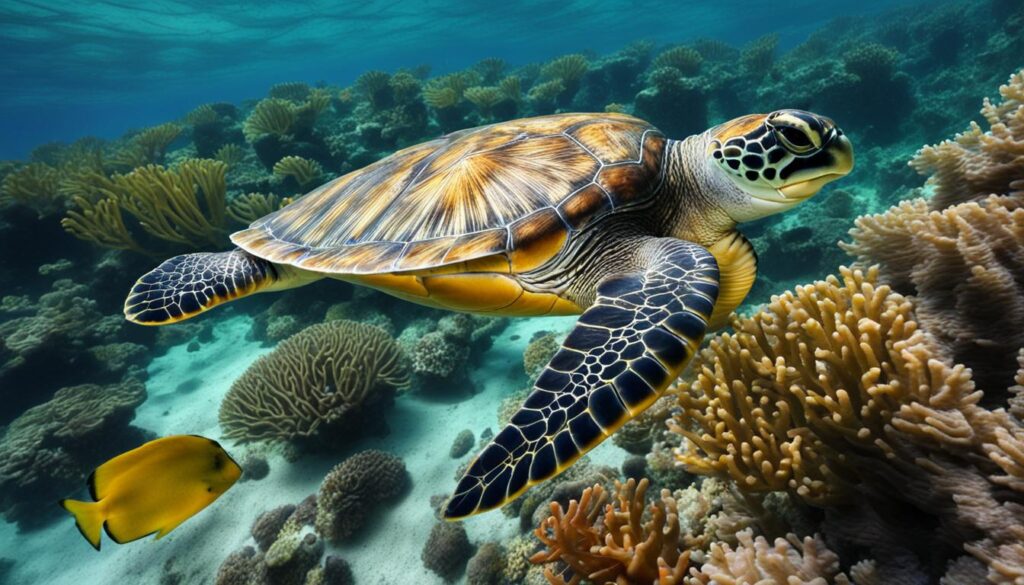
Conservation Efforts
Sea turtle conservation efforts involve a range of initiatives and collaborations. Conservation organizations work tirelessly to protect sea turtle nesting sites, monitor and research sea turtle populations, and educate the public about the importance of conservation. These organizations rely on the support of individuals, local communities, and governments to implement effective conservation strategies.
Habitat protection is a key aspect of sea turtle conservation. Preserving nesting beaches and implementing measures to reduce plastic pollution and habitat destruction are essential steps in safeguarding sea turtles and their habitats. Additionally, raising awareness about responsible beach practices and the impact of human activities on sea turtles is crucial for fostering a culture of conservation and minimizing human impact.
By supporting sea turtle conservation, we are not only protecting an endangered species but also contributing to the preservation of marine wildlife and the overall health of our oceans. Each individual effort, no matter how small, makes a difference in ensuring the future survival of these gentle creatures.
How Everyone Can Help Sea Turtles
Protecting endangered sea turtles is a collective responsibility, and there are several ways that everyone can contribute to their conservation. By taking action and making small changes in our daily lives, we can make a significant impact on the survival of these magnificent creatures and their ecosystems.
Reduce Plastic Waste
Plastic waste poses a severe threat to sea turtles and other marine life. To help reduce this impact, we can all make an effort to reduce plastic consumption and properly dispose of plastic waste. Use reusable bags, water bottles, and coffee cups, and say no to single-use plastics whenever possible. By reducing our plastic footprint, we can help protect sea turtles from the dangers of ingestion and entanglement.
Practice Responsible Beach Practices
When visiting the beach, it is essential to be mindful of our actions to ensure the protection of sea turtles and their nesting sites. Avoid leaving behind any litter or beach belongings that can disturb nesting habitats or harm nesting sea turtles. Follow designated pathways, refrain from excessive noise and light, and respect any conservation guidelines or restrictions in place. By practicing responsible beach behavior, we can help create a safer environment for sea turtles to nest and thrive.
Support Conservation Organizations
There are numerous organizations dedicated to sea turtle conservation that rely on public support to continue their important work. Consider donating to these organizations or volunteering your time to contribute to their conservation efforts. By supporting these organizations, you directly contribute to the protection and preservation of sea turtles and their habitats.
Participate in Environmental Education
Environmental education plays a crucial role in raising awareness about the importance of sea turtle conservation. Educate yourself and others about the threats faced by sea turtles and the actions we can take to protect them. Participate in workshops, seminars, and educational programs focused on marine conservation. By spreading knowledge and promoting environmental awareness, we can inspire others to join the cause and create a collective effort to safeguard endangered sea turtles.
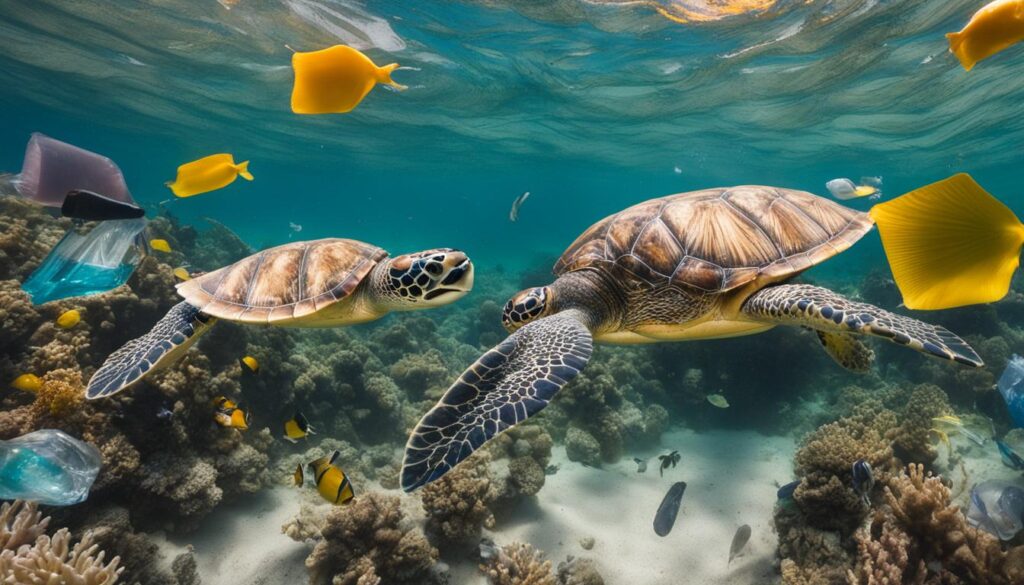
Conclusion
Every individual has the power to make a difference in sea turtle conservation. By reducing plastic waste, practicing responsible beach behavior, supporting conservation organizations, and participating in environmental education, we can contribute to the long-term survival of these extraordinary creatures and the preservation of their habitats. Together, we can protect endangered sea turtles and ensure the health and balance of our marine ecosystems for future generations.
Conclusion
Protecting endangered sea turtles is of utmost importance for marine conservation and the preservation of biodiversity. By prioritising habitat protection and investing in conservation efforts, we can ensure the long-term survival of these magnificent creatures and the health of our marine ecosystems.
The preservation of sea turtle habitats is essential, as these endangered species play a vital role in maintaining balance and promoting the overall well-being of the marine environment. Through collaborative efforts and increased awareness, we can contribute to the protection of endangered sea turtles and the preservation of their fragile ecosystems.
Conservation initiatives should be supported to safeguard these incredible animals. By engaging in responsible practices and reducing our impact, we can help protect sea turtle populations and their habitats. Together, we can strive towards a future where marine wildlife thrives and the wonders of our oceans are preserved for generations to come.
Let us remember that the well-being of endangered sea turtles is intertwined with our own. By valuing the importance of marine conservation, the preservation of biodiversity, and the protection of habitats, we can create a more sustainable and harmonious relationship with our oceans. Together, we have the power to make a difference and ensure a brighter future for both sea turtles and ourselves.
FAQ
Are sea turtles really important for the marine ecosystem?
Yes, sea turtles are keystone species that play a vital role in maintaining the balance of the marine ecosystem. They control prey populations, contribute to beach nourishment through nesting, provide food for other animals, and support coastal economies.
What can sea turtles do for coral reefs?
Sea turtles, especially hawksbill sea turtles, help control the population of sea sponges in coral reef ecosystems. Their feeding habits promote the growth of less common sponges, leading to increased biodiversity on the reef.
How do sea turtles contribute to beach nourishment?
Sea turtles contribute to beach nourishment through their nesting activities. The eggs and unhatched hatchlings provide nutrients to coastal vegetation, promoting the growth of dune grasses that help stabilize the beach and prevent coastal erosion.
What role do sea turtles play in food webs?
Sea turtles play a crucial role in food webs as both prey and predators. Hatchlings are preyed upon by various animals, while adult sea turtles are targeted by apex predators like sharks and orcas. They regulate prey populations and provide shelter for smaller species, contributing to the ecological balance in both land and ocean ecosystems.
How do green sea turtles help seagrass beds?
Green sea turtles graze on seagrass, promoting its growth and preventing overgrowth. Seagrass beds serve as habitat, food sources, and nursery areas for many marine species. Protecting green sea turtles is crucial for the preservation of seagrass ecosystems and the overall marine ecosystem.
Do sea turtles hold any cultural significance?
Yes, sea turtles hold cultural significance for many coastal communities and indigenous cultures. They are revered as ancestral beings and attract eco-tourism, providing jobs and income for local communities. Sea turtle conservation organizations work to protect these endangered species and raise awareness about their importance to both nature and culture.
How are sea turtles affected by human activities?
Sea turtles are significantly impacted by human activities. Plastic pollution poses a threat as sea turtles mistake it for food. Light pollution can disorient hatchlings and lead them away from the ocean. Climate change affects sea turtle populations by altering nesting conditions and ratios of genders. Habitat destruction further exacerbates the challenges faced by these endangered species.
What would be the ecological effects of sea turtle extinction?
Sea turtle extinction would have severe ecological effects, such as the decline of seagrass beds. Sea turtles are key grazers that maintain the health of seagrass beds, which provide habitat for numerous marine species and support the marine food chain. The loss of sea turtles would disrupt the balance of beach ecosystems and have cascading effects on the entire marine ecosystem.
Why is sea turtle conservation important?
Sea turtle conservation is important for the protection and preservation of endangered sea turtles. It involves habitat protection, awareness campaigns, research, and collaborations with conservation organizations. By supporting sea turtle conservation, we contribute to the preservation of marine wildlife, the protection of endangered species, and the maintenance of a healthy marine ecosystem.
How can individuals help sea turtles?
Individuals can make a significant impact on sea turtle conservation. By reducing plastic waste, practicing responsible beach behaviors, supporting conservation organizations, and participating in environmental education initiatives, we can help protect endangered sea turtles. Together, we can contribute to the long-term survival of these magnificent creatures and their ecosystems.
Why should we protect endangered sea turtles?
Protecting endangered sea turtles is crucial for their survival and for the overall health and balance of marine ecosystems. By preserving sea turtle habitats, promoting conservation efforts, and raising awareness about the importance of biodiversity, we can ensure a brighter future for both sea turtles and ourselves. Let us come together to safeguard these magnificent creatures and the wonders of our oceans.






